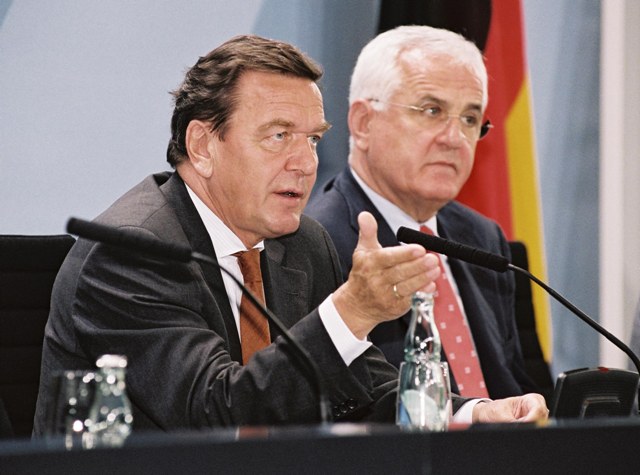Source

Source: © REGIERUNGonline/Bienert
To reform the labor market, a fifteen-member “Committee for Modern Services in the Labor Market,” led by Volkswagen personnel director Peter Hartz, was created in February 2002. The Hartz Committee – as it came to be known in colloquial shorthand – adhered to the principle of “Support and Demand.” On August 16, 2002, Peter Hartz presented the committee’s report, which included recommendations aimed at cutting the number of unemployed in half within three years. After the Bundestag elections of 2002, the so-called Hartz I-IV Laws, which were based on these recommendations, were put in motion. Hartz I and II, both of which took effect at the beginning of 2003, provided for the introduction of temporary work agencies as well as the creation of different employment opportunities to help the unemployed achieve independence or reintegration into the job market. With Hartz III, which took effect at the beginning of 2004, the Federal Labor Office became the Federal Employment Agency. Hartz IV, the merging of unemployment assistance and social welfare benefits, was the most controversial; but after the Bundesrat gave its approval, the law went into effect on January 1, 2005.
In this photo, Gerhard Schröder (left) and Peter Hartz inform the press about the implementation of the Hartz Committee’s proposals to reform the job market.

Source: © REGIERUNGonline/Bienert